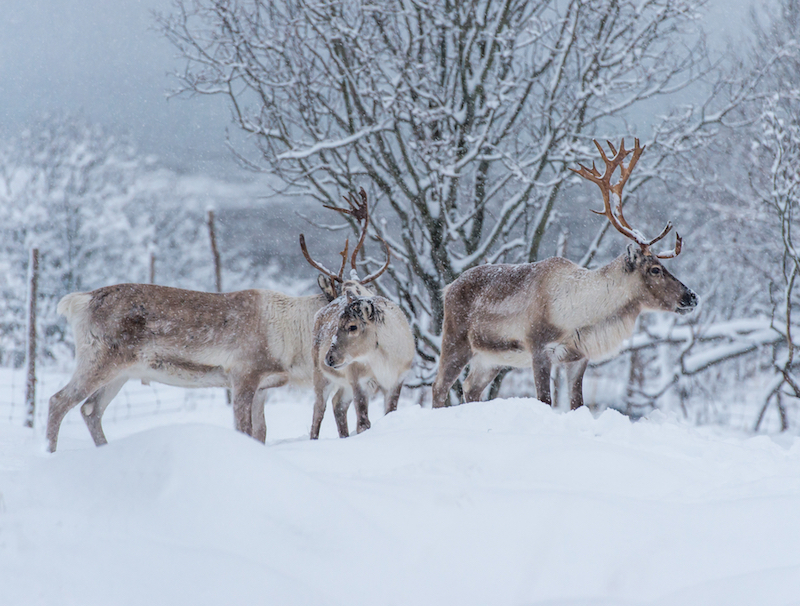Animal Sex: How Santa's Reindeer Do It

In December, reindeer spend their time carting Santa around as he delivers presents to children around the world, or so the story goes. But the famous ungulates are engaged in a very different activity in the months preceding Christmas — mating.
Though Rudolf may have been picked on by his peers, wild reindeer (Rangifer tarandus) typically live in small peaceful herds throughout most of the year. That is, until the fall breeding season, or rut, comes around.
During this time, which runs from September or October to November, competition between males heats up and every reindeer is out for himself. Depending on the reindeer sub-species (and the environment in which they live), males may opt for one of several mating strategies.
For instance, the non-migrating high Artic reindeer adopt a harem-defense strategy wherein they collect multiple females (sometimes up to a dozen or more) to mate with, and then defend them against other males. Comparatively, forest-living male reindeer focus on defending resource-rich territories — and the small groups of females that come to feed in these territories. [6 Surprising Facts About Reindeer]
Reindeer in the tundra, on the other hand, migrate in large groups during the fall, an activity that coincides with the breeding season. Because of this mobile lifestyle, males often aren't able to collect a harem and instead focus on herding and defending single females in estrous.
In some cases, however, migrating males are able to form mobile harems, but these groups are unstable and females frequently move between them.
Strategies and tactics
Get the world’s most fascinating discoveries delivered straight to your inbox.
Within these general strategies males may adopt even more specific tactics. Research shows, for example, that males associated with mobile harems may use dominant, sub-dominant or sneaker tactics.
Dominant males will try to collect as many females as possible. They are always ready to fight other males to maintain the top spot of the social order.
Sub-dominant males hang around the harems of the dominant males, anxiously awaiting the opportunity to steal females and form their own harem — or even fight the dominant males for their mating groups. Young sneaker males try to quickly slip into harems to mate with females when the harem leader is unaware.
These tactics aren't necessarily fixed for an entire rut and can change within minutes, such as if two dominant males fight and the winner takes the loser's harem, forcing the loser to adopt a sub-dominant tactic. Fights can be quite serious at times, with some male reindeer sustaining severe injuries from their opponents' antlers.
Interestingly, up to 90 percent of mating occurs within a 10-day period called the "peak rut," in which the males' mating behaviors — including grunting, trashing bushes and chasing rivals — become highly synchronized and active. Each female is only receptive to mating for two days during this peak rut.
Choosing and courting mates
Though male reindeer try to mate with any and every female they can, it's unclear if females actively choose their mates.
But researchers have observed female reindeer going around and visiting multiple males during the couple of weeks preceding estrous — and trying to catch the attention of dominant males they fancy, suggesting that they do try to exert some level of mate choice.
Aside from these activities, reindeer don't appear to engage in many courtship behaviors.
Dominant males stay on high alert during the rut, watching their harem and testing females for estrous. To do so, a male will grunt at a female with his head held low and sniff her vaginal area while lifting his upper lips (a so-called flehmen response).
Once he finds a female in estrous, the male will ramp up his grunts and flehmens, sometimes for a whole day. The receptive female, for her part, will stay close to the dominant male and try to fend off sneaker males with her antlers.
To mate, a male will mount the female from behind, though it usually requires several tries before the female will stand still and allow him to penetrate her.
After successfully mating with a female — an act that's over in just a few seconds — the male reindeer loses all interest in his former lover and stops protecting her from other males, despite her attempts to stay near him.
Follow Joseph Castro on Twitter. Follow us @livescience, Facebook & Google+.



